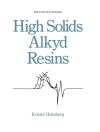These proceedings contain current research from industry, academia
and government organizations, working on opaque and transparent
ceramic armor. Papers on novel materials concepts for both vehicle
and body armors are included, as well as papers that explore the
relationship between computational modeling and property
testing.
These papers were presented at the Proceedings of the 30th
International Conference on Advanced Ceramics and Composites,
January 22-27, 2006, Cocoa Beach, Florida. Organized and sponsored
by The American Ceramic Society and The American Ceramic Society’s
Engineering Ceramics Division in conjunction with the Nuclear and
Environmental Technology Division.
Tabella dei contenuti
Preface.
Introduction.
A Review of Computational Ceramic Armor Modeling (Charles E.
Anderson. Jr.).
Silicon Carbide.
Biomorphic Si Si C-Materials for Lightweight Armour (Bernhard
Heidenreich, Michaela Gahr, Elmar Stra Dburger, and Ekkehard
Lutz).
Evaluation of Sic Armor Tile Using Ultrasonic Techniques (J.
Scott Steckenrider, William A. Ellingson, Rachel Lipanovich,
Jeffrey Wheeler, and Chris Deemer).
Spherical Indentation of Sic (A. A. Wereszczak and K. E.
Johanns).
Damage Modes Correlated to the Dynamic Response of Sic-N (H. Luo
and W. Chen).
Grain Boundary Chemistry of Sic-Based Armor (Edgardo Pabit,
Kerry Siebein, Darryl P. Butt, Helge Heinrich, Darin Ray, Sarbjit
Kaur, R. Marc Flinders, and Raymond A. Cutler).
Effect of Microstructure and Mechanical Properties on the
Ballistic Performance of Sic-Based Ceramics (Darin Ray, Marc
Flinders, Angela Anderson, Raymond A. Cutler, James Campbell, and
Jane W. Adams).
Addition of Excess Carbon to Sic to Study its Effect on Silicon
Carbide (Sic) Armor (Chris Ziccardi and Richard Haber).
Glass and Transparent Ceramics.
Analysis of Time-Resolved Penetration of Long Rods into Glass
Targets-l I (Charles E. Anderson, Jr., I. Sidney Chocron, and Carl
E. Weiss).
Response and Characterization of Confined Borosilicate Glass:
Intact and Damaged (Kathryn A. Dannemann, Arthur E. Nicholls,
Charles E. Anderson, Jr., Sidney Chocron, and James D. Walker).
Constitutive Model for Damaged Borosilicate Glass (Sidney
Chocron, James D. Walker, Arthur E. Nicholls, Charles E. Anderson,
and Kathryn A. Dannemann).
Reaction Sintered Li Al ON (Raymond A. Cutler and R. Marc
Flinders).
Large Area EFGTM Sapphire for Transparent Armor (Christopher D.
Jones, Jeffrey B. Rioux, John W. Locher, Herbert E. Bates, Steven
A. Zanella, Vincent Pluen, and Mattias Mandelartz).
Other Opaque Ceramics.
Relationship of Microstructure and Hardness for A120, Armor
Materials (Memduh Volkan Demirbas and Richard A. Haber).
Root Causes of the Performance of Boron Carbide Under Stress
(Giovanni Fanchini, Dale E. Niesz, Richard A. Haber, James W.
Mc Cauley, and Manish Chhowalla).
Analysis of Texture in Controlled Shear Processed Boron Carbide
(D. Maiorano, R. Haber, and G. Fanchini).
Damage and Testing.
Progress in the Nondestructive Analysis of Impact Damage in Ti62
Armor Ceramics (Joseph M. Wells).
Elastic Property Determination of WC Spheres and Estimation of
Compressive Loads and lmpact Velocities That Initiate Their
Yielding and Cracking (A. A. Wereszczak).
On the Role of Impact Damage in Armor Ceramic Performance
(Joseph M. Wells).
The Indentation Size Effect (ISE) for Knoop Hardness in Five
Ceramic Materials (Trevor Wilantewicz, W. Roger Cannon, and George
Quinn).
Influence of Microstructure on the Indentation-Induced Damage in
Silicon Carbide (Jeffrey J. Swab, Andrew A. Wereszczak, Justin
Pritchett, and Kurt Johanns).
Author Index.
Circa l’autore
Andrew A. Wereszczak received his Ph.D. in Materials Science
& Engineering from the University of Delaware in 1992, and
while his research is varied, the study and interpretation of the
relationship between mechanical properties and microstructure (of
monolithic ceramics, structural materials, and electronic
materials) are common denominators. Micromechanical
characterization of structural and armor ceramics using
instrumented static and dynamic indentation (e.g., Hertzian) with
acoustic emission analysis, and adapting those measured
performances and damage mechanism analyses to strength, rolling
contact fatigue, wear, machining, and ballistic performances is a
primary objective.
Additionally, ceramic strength and fatigue testing, ceramic
fractographical and flaw population analyses, Weibull analysis
strength-size-scaling, and probabilistic life prediction and design
of structural ceramic components constitutive another primary
research objective. In support of all these efforts, both
conventional and microstructural-level finite element stress
analyses and microstructure characterization are performed. He is
the author or co-author of over 100 technical publications and has
given over 80 presentations, and is the co-developer of
µ-FEA software.
Edgar Lara-Curzio is a Distinguished Research Staff
Member and the leader of the Mechanical Properties and Mechanics
Group at Oak Ridge National Laboratory. Since 1999 he has
been serving as leader of the Mechanical Characterization and
Analysis User Center in ORNL’s High Temperature Materials
Laboratory. Lara-Curzio received a B.Sc. degree in
Engineering Physics from the Metropolitan University in Mexico City
in 1986 and a Ph.D. in Materials Engineering from Rensselaer
Polytechnic Institute, Troy NY, in 1992.
His research work has been focused on studying the mechanical
behavior, durability and reliability of structural and functional
materials, on understanding the relationships among their
processing, microstructure and properties, studying the effect of
service environment on their properties and on developing models to
describe their behavior and to predict their service life.
Dr. Lara-Curzio has co-edited 6 books and has authored 4 book
chapters and more than 140 publications in refereed journals and
conference proceedings.












